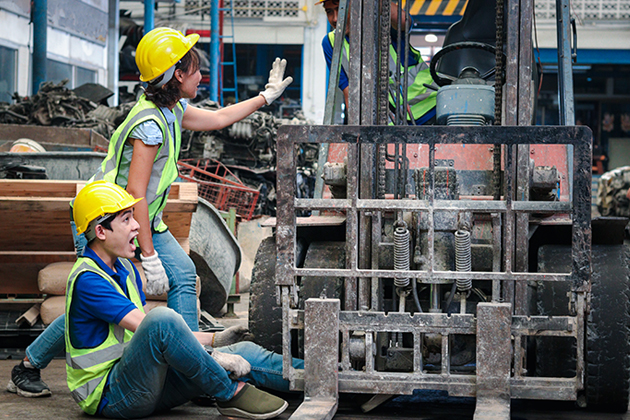
When construction accidents happen, navigating the complex world of lawsuits between contractors and subcontractors can be a nightmare. Whether you are overseeing apartments, malls, restaurants, factories, or any other commercial space, it is crucial to understand key elements of contractual risk transfer. To ensure you are fully protected, it is essential to have these five contract requirements in place:
1. Hold Harmless and Indemnification Agreements
When hiring a contractor for property work, it is vital to safeguard yourself against potential liability. Indemnity agreements make the contractor responsible for any injuries or damages that occur during the project, unless it is your fault or the fault of your property manager. To ensure complete protection, all work orders should clearly include a hold harmless/indemnification provision that must be signed by the repair person, service provider or contractor before commencing any work.
2. Insurance Requirements and Additional Insured Coverage
Your contractor’s general liability and umbrella policies should have an additional insured status for ongoing and completed operations on a primary and non-contributory basis. This requirement should also apply to any subcontractors hired by the contractor. Additionally, it is imperative to to verify that both the contractor and subcontractors have the necessary workers' comp coverage as mandated by state law.
3. General Acceptance Provisions
When it comes to critical work documents, such as orders, contracts or agreements, hold harmless/indemnification and insurance requirements/additional insured status provisions are essential for the legal protection for everyone involved. To eliminate any confusion or uncertainty, it is crucial to clearly state these provisions in the document itself. Once accepted, they hold the same weight as a fully executed document. This ensures clarity and avoids any ambiguity. Furthermore, if the work requires ongoing service throughout the year, it is important to explicitly state in writing that these provisions are in effect until any changes are made in writing. By following these straightforward steps, you not only protect yourself but also ensure that all parties involved are fully aware of their responsibilities.
4. Waiver of Subrogation and Workers Compensation Immunity
When hiring a contractor, make sure that they waive their right to subrogation, obtain a policy endorsement from their insurer for such, and indemnify you for injury to their workers. This means that if there is a loss due even partly to your negligence, they agree not to seek reimbursement from their insurer. However, it is not just about safeguarding yourself. It is equally important to ensure that their obligation to indemnify you is not restricted by workers compensation or any other benefits they might receive. By doing so, both parties are protected in the event of any unforeseen issues.
5. Certificate of Insurance
Ensure your contractor is fully covered before they begin work. Request a certificate of insurance (COI) to confirm they have insurance for general liability, auto liability and workers compensation with sufficient coverage limits. Additionally, make sure you are listed as an additional insured party and that their insurance is endorsed to receive cancellation notifications as required by law. Implementing automation tools can help you organize these insurance documents to reduce risk and strengthen your relationship with subcontractors.
